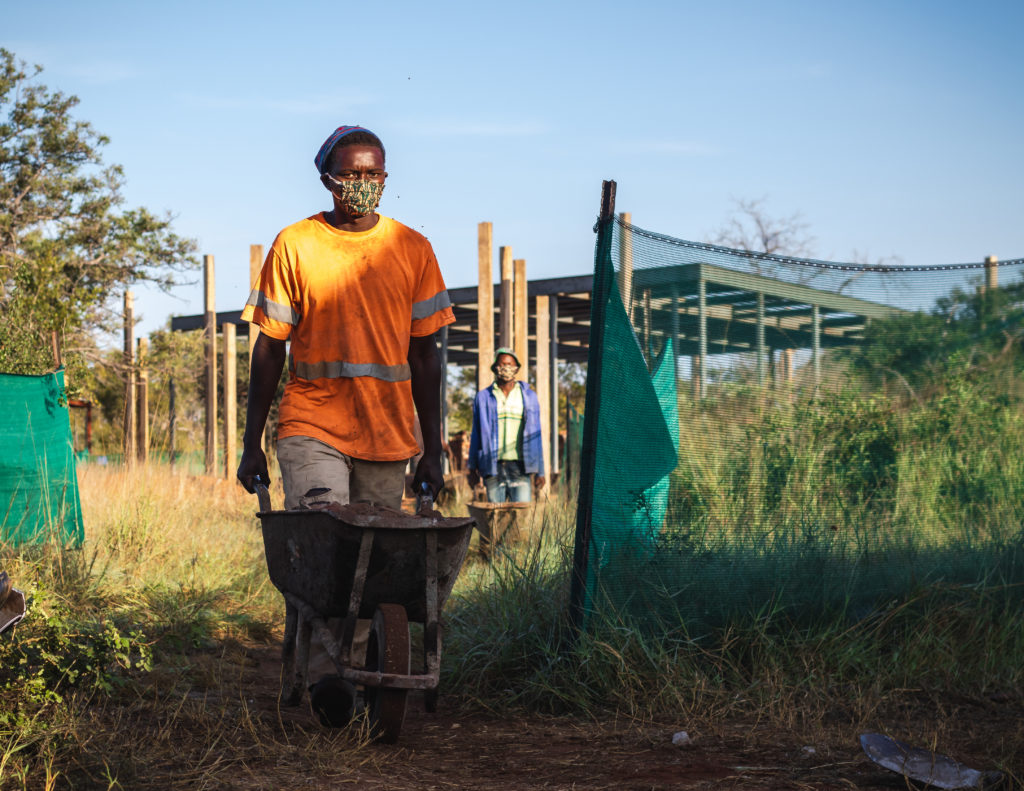How can we make conservation more resilient, sustainable, and investable to counter the impact of post Covid-19 market disruption and our own rapidly expanding human footprint challenges that this presents? The expected reduction in international tourism over the next 5 years may mean an 80% reduction in revenue for conservation, with negative economic impacts on the communities that depend on it. Simply seeing this period as a short-term conservation funding shortfall, with the ability to merely reboot the conservation sector post this pandemic, is an unrealistic assessment of the situation – the impact of Covid-19 needs to be better understood.
The collapse of tourism and state budgets threatens seismic and irreversible impacts on the survival prospect for many species, both endangered and not. We can see a rapid acceleration in the decline of various species that the tourism business depends on, heightening the probability that our children’s generation will never see these species in their natural habitat. Furthermore, this collapse could accelerate the degradation of landscapes on which the market depends.
Domestically, many of the over 7600 Protected Areas in Africa and their neighbouring communities depend on tourism for revenue and to fund their conservancy activities; the scale of the problem to ‘keep the lights on’, whilst securing frontline operations of anti-poaching and security, could well exceed 10bn over the next 5 years.
This challenge for conservation funding is not part of a ‘new’ normal, but has been on the table in our most recent history, under pressure post the 2008 financial collapse and now even more so; this pandemic has only accelerated the situation into a much deeper level of crisis. Philanthropy, traditional donor funding programs and government funding will never, by themselves, solve this; increased and improved investment by the private sector offers one viable way that this decline can be addressed.
Historical lessons learned show that conservation has inadequately engaged African leadership and their communities. International governments have promised ineffective action, with local community economic support and engagement often considered secondary to protecting wildlife, leading in-part to arguably siloed investment thinking. The NGO community have taken an often fragmented approach, lacking the resources required to plan for the future. More effort is needed to measure long-term benefits for interventions made, as populations of endangered species continue to decline, vital wildlife habitat is lost and local communities suffer.
Better investment in responsible tourism, better investment in businesses that provide livelihoods to local communities, better investment in infrastructure, can all help build a more resilient environment in which species and habitat protection are given the right priority; we need to move out of the blinkered world of “conservation” into the broader context – livelihoods, regenerative economic growth, land policy, agriculture:
- Transforming tourism by facilitating investment through commercial incentives is going be an essential part of any potential market recovery.
- Building partnerships with African Leaders, and implementing more equality here, to replace the outdated dynamic between donors and recipients needs to be a priority.
- When conserving a landscape, considerations must be taken into account on how projects can protect and grow communities, as well as species – creating jobs and employment, providing education and health improvements, and better law enforcement all through partnership programs should be planned in parallel to natural asset conservation.
- Better technical innovation, better adherence to international guidelines and standards, sharper oversight and aid all focused on future sustainability and recognising the further impact of climate change are vital.
- We need a significant step-up in government funding flows – and from a greater diversity of sources, as well as the creation of more encouraging conditions for investment success to improve private capital inflows.

Local builders at the construction site for the Xinghana Community Lodge, a partnership between Karingani and the Cubo Community.
We know from experience that more tourism, or even better tourism, is not the sole answer to the biodiversity challenge, but it is one of them. The endpoint is greater resilience of the natural habitat, and an end to the decline of endangered species and biodiversity, but most importantly, in our measure of success there is also an inclusive shift towards community participation and benefit.
Creating the conditions for investment success through public and private partnerships is surely the key to future conservation success. Africa is not alone in facing the current impact of tourism revenue loss, and in recovery, needs to be able compete with other markets including the US, Central America, parts of Asia and the Indian Ocean Islands, as domestic nature-based and drive-to tourism models in traditional source markets supplying Africa are a new and further threat to the erosion of Africa’s post Covid market position.
We must remind ourselves that tourism alone cannot be considered the long-term solution for economic resilience within the African conservation sector; the need for alternate economies, community partnerships and integrated investment models is now apparent and amplified by this most recent and disruptive pandemic.
Paul Milton, Founder


 By miltongroup, August 3, 2020
By miltongroup, August 3, 2020